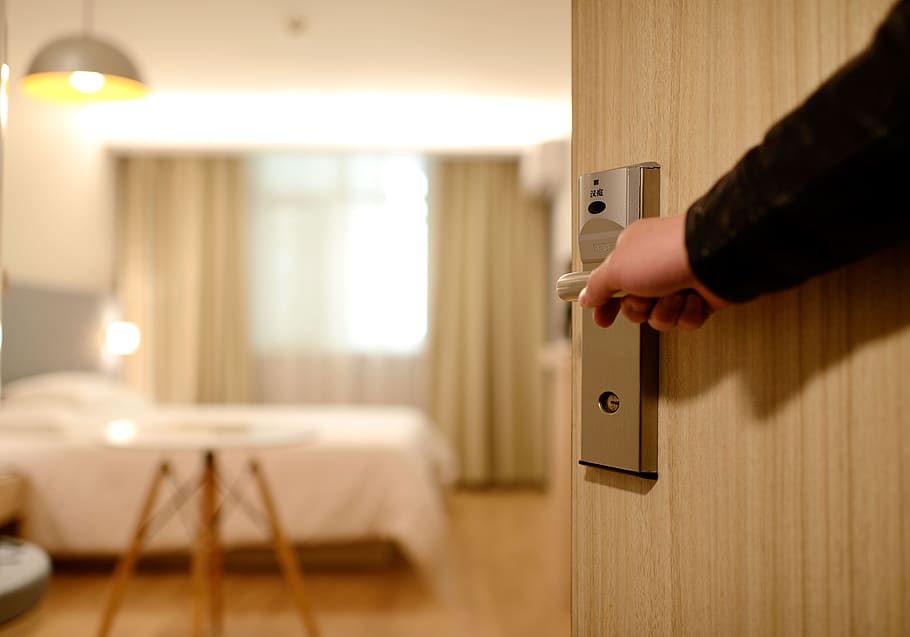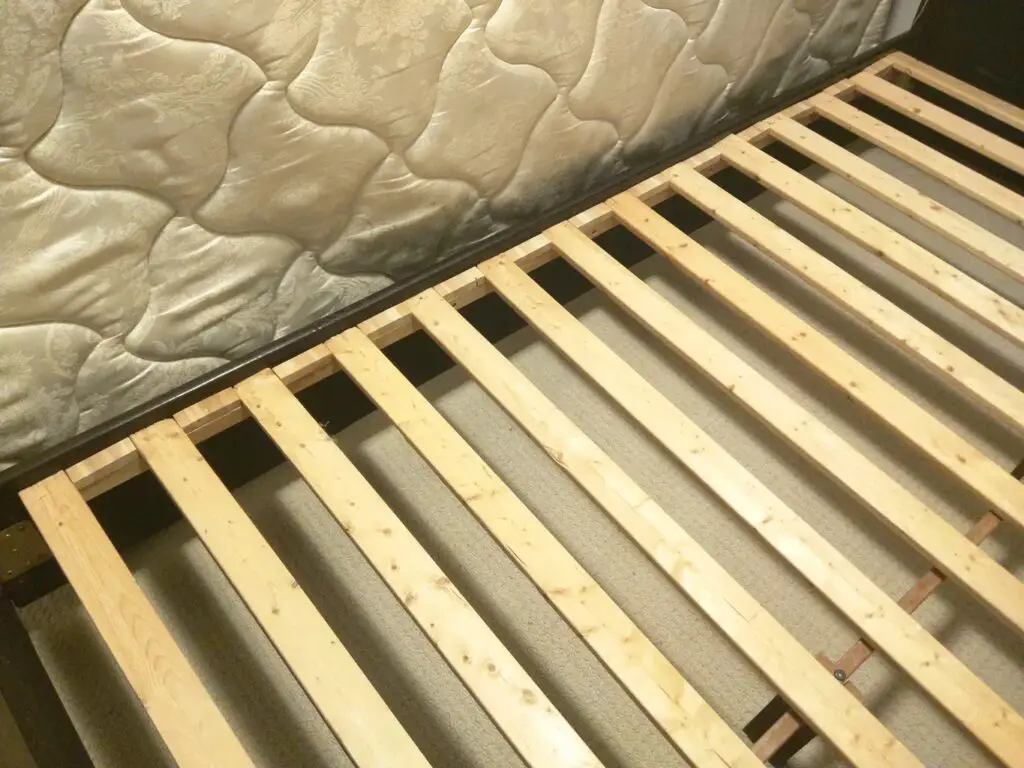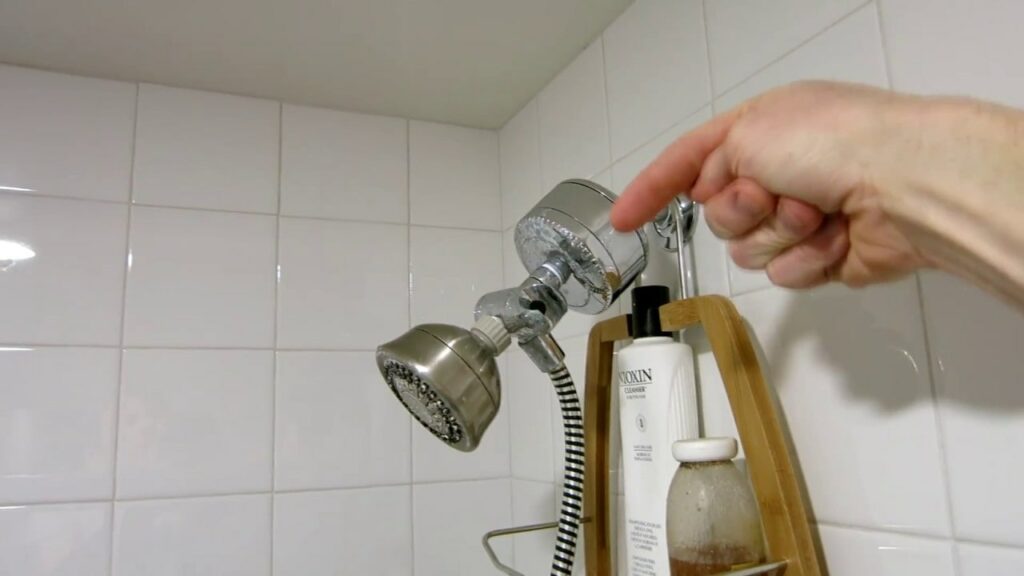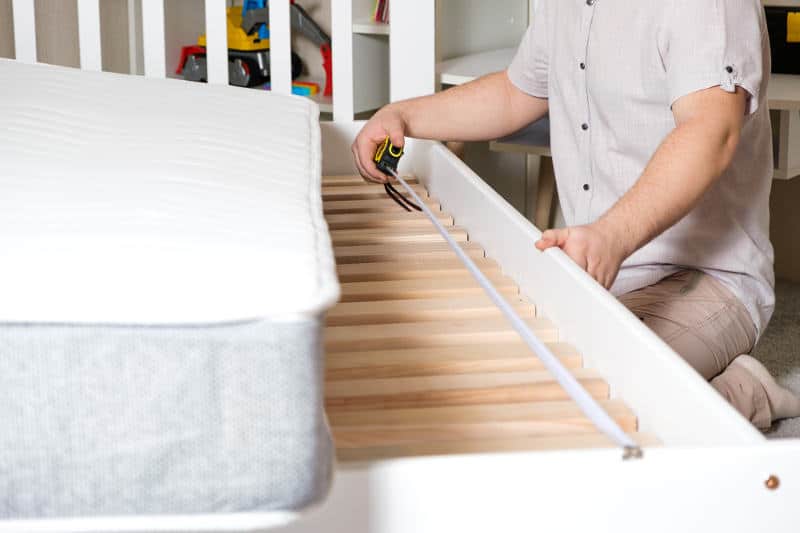One of the most prevalent and annoying plumbing issues that people have in their homes is to unclog a drain with baking soda and vinegar.
While utilizing strings, hooks, and coat hangers to fish out the clogs is a traditional and useful decision, baking soda and vinegar are frequently a quicker and cleaner alternative.
Unclogging a drain using baking soda and vinegar is simple, inexpensive, and secure.
We will examine each of the aforementioned processes in further detail in this article.
To find out exactly to unclog your drain, continue reading.
8 Easy Steps to Unclog a Drain with Baking Soda and Vinegar:
1. Locate and identify the clog:

Drain clogs are frequently a fairly simple problem to fix, but sometimes it can be challenging to pinpoint the problem.
There is frequently a lot of plumbing and things that pass through the pipes that make your drains, whether it is a shower, bath, or sink.
It can be very challenging to determine precisely which pipe the clog is in and where in the pipe it is placed. However, doing so is necessary to guarantee that the drain can be unclogged.
Finding the “symptoms” of a clog is the simplest technique to determine a clogged pipe’s location.
There is probably a clog in your plumbing system if you hear gurgling coming from your drains, notice that water is “backing up,” or notice that they are draining very slowly.
If the obstruction is high enough for you to scoop it out, do so. If not, you’ll need to clean it with vinegar and baking soda.
2. Pour two cups of boiling water down the drain:

Boiling two cups of water and pouring it down the drain will help you discover the blockage and which drain it is in.
As you would often do when pouring hot water down the drain, do not mix cold water with hot water.
This is due to the fact that too much water may cause the drain to clog and lessen the efficiency of the vinegar and baking soda.
So, limit yourself to two cups of hot water and let it drain.
The hot water that is put down the drain can assist in “loosening up” the blockage by washing away any debris that can be cleaned off.
For instance, boiling water in a bath or shower can loosen hair. Additionally, a sink’s grime may become unbaked, washing away extra items.
In addition, this will prevent any other liquids from interfering with the baking soda and vinegar.
3. Pour two Dish Soap bottle caps down the drain:

While many clogs may be cleared by boiling water, dish soap can assist in further loosening any obstructions.
Grease and oil build-up is a common cause of clogs in sinks, particularly kitchen sinks.
The clog will either be completely removed or reduced in size with the use of hot water and, ideally, grease-fighting dish soap.
This makes using vinegar and baking soda to to unclog a drain in your drain easier.
But make sure you only pour in two bottle caps worth of dish soap. More than this will result in an excessive amount of soap. In fact, soap suds will make the clogging worse.
Water is the easiest way to get rid of soap suds, but if there is a clog, they won’t be able to drain.
Therefore, it is essential that you use no more than two bottle caps of dish soap.
4. Down the drain, pour one cup of baking soda:
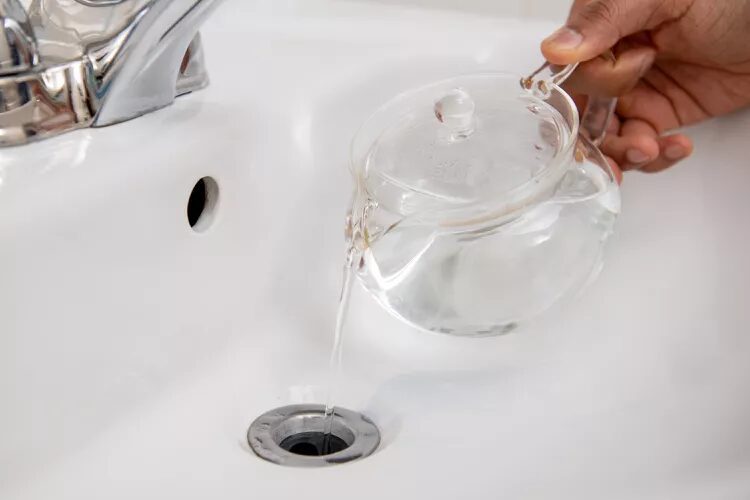
Add one cup of baking soda to the drain after running hot water and dish soap through it.
Make sure you pour the baking soda into the drain first because if you add the vinegar first, the blockage will suspend it higher in the drain.
Baking soda can be initially put down the drain to speed up the reaction. But if you added the vinegar first, part of it would drain out and some of the baking soda wouldn’t react.
The clog would only get worse if this happened. Give the baking soda 30 seconds to sit. This will allow it to completely round the obstruction.
Putting dish soap and warm water close to the clog will also help.
5. Pour a cup of vinegar down the sink:


After mixing the baking soda and vinegar, pour a cup of it down the drain.
Although red wine vinegar and apple cider vinegar will assist in masking any odor that might be connected to the clog in your drain, the type of vinegar is not crucial.
When vinegar and baking soda are combined, a chemical reaction results in the production of carbon dioxide gas.
Baking soda and vinegar are consequently blended, resulting in a sloppy froth. Many of the constituent particles start to disintegrate as soon as this chemical reaction starts.
Baking soda and vinegar work to remove stains by gradually dissolving the dirt and filth between the stain-causing agent and the affected material.
Similar to how it will start to break down the substances forming a clog in a drain when used for that purpose.
6. Set the drain aside for 5 minutes:
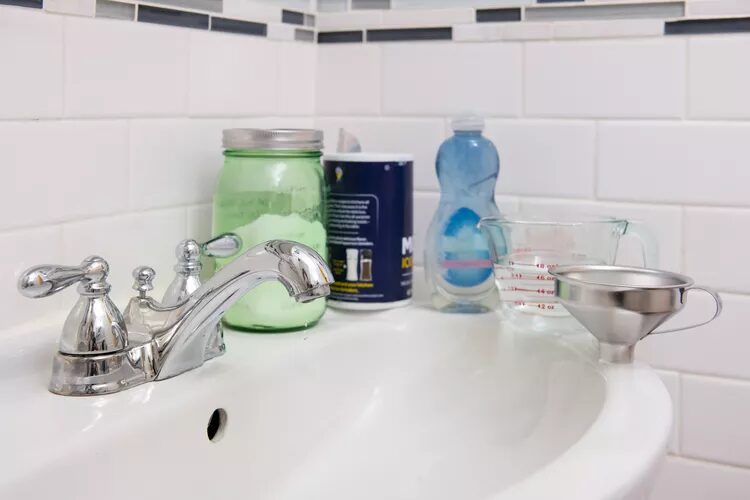

Baking soda and vinegar will start to dissolve the clog as soon as they are mixed together inside the drain. Allowing the drain to rest supports the clog’s dissolution.
A greater amount of the baking soda and vinegar solution penetrates into the blockage as it becomes smaller and more absorbent.
When the reaction between the baking soda and vinegar is complete, pour hot water down the drain.
Any more debris that might be inside the drain but isn’t causing the clog can be destroyed by letting the solution sit in the drain for a while.
Even without entirely clearing the clog, simply clearing out extra items might improve how well the drain functions.
7. Down the drain, pour two cups of boiling water:



Try once more to identify the source of the clog if your drain is still unclog after using vinegar and baking soda three times.
This will remove any extra vinegar and baking soda that can cause a clog in the future. In addition, it will probably wash away any leftover obstructions that could occur.
By now, any grease, grime, or other obstructing substances ought to be sufficiently loosened for warm, hot water to be sufficient to remove them from the drain.
The clog will be removed by the hot water as well clear the way for proper drain operation.
8. Repeat as Necessary:
- Upon further inspection, if you discover that: Your drain is not emptying swiftly or fully.
- The drain is gurgling.
- Draining materials are being flushed backward.
If so, it indicates that the obstruction has not yet been cleared. In this scenario, repeat the preceding instructions three more times.
If your drain is still clogged after using baking soda and vinegar three times, attempt once more to locate the clog’s source.
By this time, you might be able to move it freely. You will need to discover another method to unclog your drain if manual attempts to remove the clog fail.
Most neighborhood stores have a wide variety of drain cleaners in addition to specialist equipment made specifically for cleaning drains.
Consider purchasing one of these items if the vinegar and baking soda technique fail.
Tips for Cleaning Tidy Drains:
- To prevent food and hair from entering the drain, always use strainer baskets on your drains.
- Never flush grease or oil down the toilet. When preparing greasy or oily foods, wipe the cookware with a paper towel before washing to avoid a clog in the drain.
- To avoid the accumulation of fatty clogs, pour boiling water and dish soap that is grease-fighting down the drain on a regular basis.
- Baking soda and salt or baking soda and vinegar cleaning and sanitizing methods are effective for garbage disposals.
- Reduce the necessary quantities of baking soda, water, vinegar, and salt by half and follow the following instructions to get rid of odors from a garbage disposal.
Also read: Will Vinegar Hurt PVC Pipes?
FAQ- How to Unclog a Drain with Baking Soda and Vinegar?
To warm up the pipes, let the hot water flow for a minute.
In order to clean the drain, 1/2 cup of baking soda must be used.
You will hear fizzing after adding 1 cup of vinegar, plugging the drain, and letting it sit for 10 minutes.
Use extra hot water to rinse.
If the drain is still blocked, add two cups of boiling water after using one cup each of vinegar and baking soda.
Allow it to empty the drain while you sleep.
Drains can be cleaned once a week using Dawn dish soap and hot water.
Use the baking soda approach to assist clear the drain if you find that the water is not draining swiftly.
Baking soda can also be used for regular maintenance.
Also read: How To Clean a Ceramic Hob?
Conclusion:
With the use of baking soda, vinegar, hot water, and dish soap, we can unclog the drain without too much trouble.
These tools offer a quick, simple, and affordable approach to increasing the performance of your drain by dissolving clogs brought on by any combination of components.
Naturally, these materials might not be able to clear every obstruction.
You might occasionally need to hire a pro to help you unclog your drains.
Alternatively, you might have to completely replace the drain.

